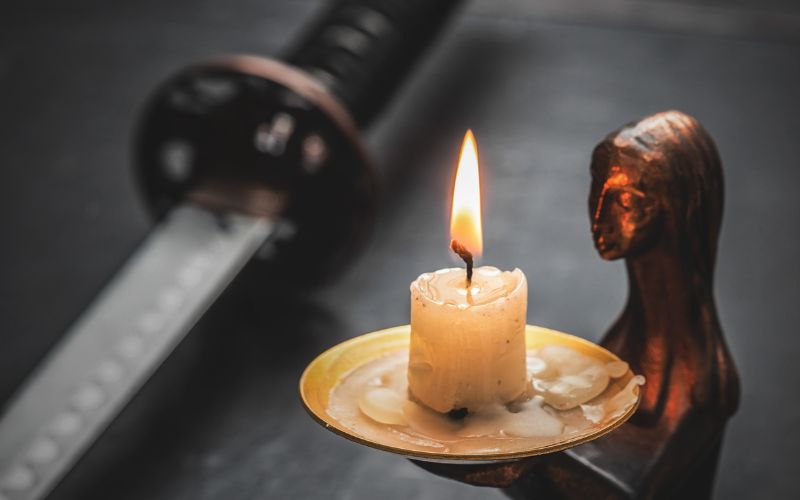Tameshigiri: The Art of Japanese Sword Testing

Tameshigiri, translated as "test cutting," is a traditional Japanese sword technique dating back to the Samurai era. This ancient art form consists of testing the quality and sharpness of Japanese swords against a variety of targets. For the modern martial artist, it serves not only as a test of the sword's quality but also as a means to hone their skill, precision, and technique.
This article aims to explore the intricate and fascinating world of Tameshigiri, its importance, history, modern methodologies, and the tools used.
What is Tameshigiri?
Tameshigiri is a practice associated with Kenjutsu, Kendo, Iaido, and other Japanese sword martial arts, where practitioners test their cutting ability and precision using a sword. This form of practice was not merely about cutting objects but about cutting them accurately, efficiently, and with a sense of control.
The technique allowed samurai warriors to understand the way their swords reacted when they made contact with an object, helping them refine their combat skills and develop a better understanding of their weapons.
The Importance of Tameshigiri
The practice of Tameshigiri carries significant importance in multiple dimensions. From a historical perspective, Tameshigiri was vital for samurai warriors to test the quality of their katana (sword). The art form enabled samurai to evaluate the effectiveness of different swords, thereby influencing their choice of weapon in battle.
In modern times, Tameshigiri is an integral part of various martial arts practices. It's a form of target practice where the practitioner can improve their mental focus, precision, technique, and power. The modern importance of Tameshigiri is not just about cutting, but also about the practitioner's mental and physical development.
Tameshigiri History
The history of Tameshigiri dates back to the Heian Period (794-1185) in Japan, an era marked by the emergence and rise of the Samurai warrior class. During this period, swordsmiths began to develop the curved, single-edged sword we now know as the katana. The need to test these swords for their effectiveness in battle led to the practice of Tameshigiri.
In the Edo period (1603-1868), Tameshigiri took a somewhat gruesome turn. Criminals sentenced to death were occasionally used as targets for Tameshigiri, a practice known as tameshi-otoshi or "trial by cutting." Thankfully, this practice faded out, replaced by the use of inanimate targets like straw mats or bamboo stalks.
Modern Methods
While Tameshigiri's historical roots were based on the need to test weapons, modern Tameshigiri has evolved to serve as a critical training component for martial artists. Practitioners today use Tameshigiri to improve their focus, form, and control when wielding a sword.
Traditionally, Tameshigiri involves a series of cuts made in quick succession. The objective isn't just to cut through the target but to do so accurately, swiftly, and with minimal effort. Each cut must follow a specific path and angle, making Tameshigiri a discipline of precision and control.
Tools Used in Tameshigiri
The primary tool used in Tameshigiri is, of course, the sword. The most commonly used sword is the katana, revered for its sharpness and balance. However, other swords like the wakizashi (short sword) and tachi (long sword) may also be used.
The target, historically human bodies or cadavers, has since been replaced with goza (rolled mats made of straw) or bamboo. These targets mimic the density and resistance of human flesh and bone, offering a realistic cutting experience.
Safety gear is another critical component of modern Tameshigiri. This includes kote (hand protectors), do (chest protectors), and men (face masks), all designed to prevent injuries during practice.
Conclusion
Tameshigiri is an ancient practice that has evolved and endured through the centuries. It stands as a testament to the sophistication and discipline of samurai culture and remains a valuable part of modern martial arts training.
Through Tameshigiri, practitioners learn not only the capabilities of their weapon but also the depth of their skill, precision, and focus. It's a beautiful blend of history, art, and martial prowess that continues to captivate and inspire.
Best Sellers
- Regular Price
- from $199.99
- Sale Price
- from $199.99
- Regular Price
-
- Unit Price
- per
- Regular Price
- from $319.00
- Sale Price
- from $319.00
- Regular Price
-
- Unit Price
- per
- Regular Price
- from $219.00
- Sale Price
- from $219.00
- Regular Price
-
$0.00
- Unit Price
- per
- Regular Price
- from $649.00
- Sale Price
- from $649.00
- Regular Price
-
- Unit Price
- per
- Regular Price
- from $339.00
- Sale Price
- from $339.00
- Regular Price
-
- Unit Price
- per
- Regular Price
- from $269.00
- Sale Price
- from $269.00
- Regular Price
-
- Unit Price
- per
- Regular Price
- from $239.00
- Sale Price
- from $239.00
- Regular Price
-
- Unit Price
- per
- Regular Price
- from $359.00
- Sale Price
- from $359.00
- Regular Price
-
- Unit Price
- per
- Regular Price
- from $539.00
- Sale Price
- from $539.00
- Regular Price
-
- Unit Price
- per
- Regular Price
- from $384.00
- Sale Price
- from $384.00
- Regular Price
-
- Unit Price
- per









